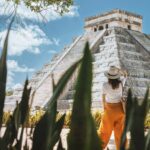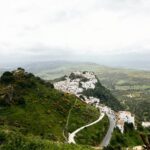The Islands of Tahiti are a mythical destination. The mere mention of them calls to mind visions of an idyllic island paradise. One that is secluded, tropical and lush. One of spending lazy days on the beach, consuming delicious tropical foods and drinks, and a slowing down to live a more peaceful lifestyle. And it is just that. But unpacking the myth that is Tahiti is akin to opening a beautiful Russian doll…
Opening the first doll – when most say Tahiti, they are referring to Tahiti Island, which is the largest and main island of the Society Islands. Opening the second doll – the Society Islands is an archipelago of the Islands of Tahiti. Now comes the third – the Islands of Tahiti create French Polynesia. And here is the fourth – French Polynesia sits in the same neighborhood as the Cook Islands and the Pitcairn Islands in the South Pacific. You get the idea…
Many visitors to French Polynesia opt for staying on the main island – Tahiti – or its famous sister – Bora Bora – but there are many amazing places to indulge your beachcombing dreams throughout the Islands of Tahiti. And while the vibe is generally the same, each of the Tahitian islands are just a bit different. (And now comes the cascade of the opening of the remaining dolls when speaking of the different archipelagos).



Society Islands
The Society Islands include the country’s main and largest island, Tahiti, her stunning sister island, Moorea, Marlon Brando’s Tetiaroa paradise atoll, Bora Bora, and multiple other world-class islands in between.
Papeete is the capital of the Island of Tahiti. Once a sleepy port town, its streets hum with cars, motorized scooters and colorful buses known as “le truck.” Shops overflow with clothing, jewelry, locally made handcrafts, and tourist trinkets. Restaurants and sidewalk cafes serve Tahitian, French and Asian cuisine. A trip to Tahiti is never complete without a visit to Le Marché, Papeete’s popular open-air market. The first floor of this lively marketplace is dedicated to selling beautiful plants and flowers, tropical fruit, vegetables, vanilla and brilliantly colored, freshly caught fish. The second floor is abundant with authentic souvenirs, offering everything from genuine Marquesan woodcarvings to colorful Tahitian pareos.
Leaving the center, lush foothills emerge as a background. Waterfalls cascade, bougainvillea bloom, and the beach beckons. Tahiti’s iconic velvety black beaches surround Polynesia’s two highest peaks and lead to popping pink coral reefs. Azure waters lap the sand as sunbathers gently nap in hammocks hung from palm trees.
It’s all that you imagine and more.
No one can forget perhaps the most famous of the Society Islands, Bora Bora. Known for its blue lagoon, this island is a place of remarkable beauty. Its magic is understood immediately upon arrival. The lagoon itself is an unbelievable palette of blue, sapphire and turquoise. Underneath its surface, immense coral formations teem with a variety of brightly colored fish. Adding to this dramatic setting is the iconic Mount Otemanu, which is the crown jewel of the island, rising sharply from the lagoon’s center. There is only one navigable pass in this vast lagoon, meaning the calm waters, intricate coral reefs and vibrant marine life remain pristine and protected. Known for its overwater bungalows, the luxurious resorts provide the perfect setting for their guests to enjoy the countless blue hues of the island’s infamous lagoon.
Bora Bora is quite possibly the most breathtaking place in the world. This island induces a sense of calm and peace.
It is impossible not to relax in its atmosphere.

Tuamotu Islands
Though not nearly as famous as the Society Islands, the Tuamotu Islands consist of 77 atolls spread over 930 miles. These islands form the largest chain on earth. Coconut plantations cover the islet of the coral barrier reef. The beauty of the lagoons, unique underwater world, and white sand beaches make the Tuamotu a unique group of islands.
One of the world’s best destinations for scuba diving, the 240 islets of Rangiroa, string together in the ocean, encircling a deep lagoon. The beautiful loop is surrounded by two different species of ocean – the Moana-tea (Peaceful Ocean) which defines the lagoon, and the Moana-uri (Wild Ocean) where whales, manta rays, dolphins, and sharks entertain in a show that is remembered for a lifetime.
On land, the main villages of Avatoru and Tiputa offer visitors a unique look at the South Pacific. Along the few roads that exist, you’ll encounter coral churches, craft centers, local restaurants, and a few shops operated by locals. Wine lovers can also enjoy wine tasting at the Dominique Auroy Estate nestled within a coconut grove, which produces three grape varieties. Jewelry lovers will appreciate the black pearl farms, which dot the lagoon.
A visit to Rangiroa has it all.
Gambier Islands
Located nearly 1,000 miles southeast of Tahiti, this archipelago is the most remote and the least populated of French Polynesia. Only around 1,000 people live here, and the archipelago is created by 14 islands, the largest being Mangareva.
Polynesian mythology tells of Mangareva being lifted from the ocean floor by the demi-god Maui. The mountains of Mangareva rise over the surrounding islands and lagoon like a great cathedral. Here people live a traditional Polynesian lifestyle.
These islands are the important supply source for the Tahitian cultured pearl industry. Along with the pearl farms and tours of the island by road or boat, travelers can also explore the surprising number of surviving churches, convents, watchtowers, and schools from the 1800s. Some structures are still in use such as St. Michel of Rikitea Church where the altar is inlaid with iridescent mother-of-pearl shell.
Mangareva is as traditionally Polynesian as it gets.
Marquesas Islands
If you want to see breathtaking high cliffs, volcanic peaks, amazing black sand beaches, gorgeous bays, and lush rainforests where thousands of artifacts lie and wild horses, goats, and boars roam – the Marquesas Islands are for you. Located 932 miles from Papeete, they offer the traveler a trip of a lifetime. Home to marine life, the Marquesas Islands offer world-class scuba diving for visitors seeking a look at the wildlife. These are also the islands that Herman Melville and Paul Gaugin chose to live on to spark their creativity.
Herman Melville wrote one of his most famous novels – Typee – in 1846 after being influenced by his adventures in the Taipivai Valley. The novel tells the story of a sailor wandering an uninhabited island, fearful of cannibals, until he is ultimately discovered by the Taipi clan. The clan surprisingly welcomes him with open arms, and he is the first European to come into contact with this secluded community on this remote island in the Pacific Ocean. Herman Melville was the sailor, and he returned from French Polynesia to tell his story. Visitors to the islands of the Marquesas can follow in the footsteps of Melville, and see the numerous artifacts encapsulated in the archipelago’s rich back roads, as if time stood still.
Famously, in the 1900’s, artist Paul Gauguin went to the Marquesan Island of Hiva Oa in search of solitude and inner peace. Visitors can walk in his footsteps, see the replica of Gauguin’s master painting “Maison du Jouir” and visit the small museum dedicated to the painter and his home. Interested visitors can also visit his grave located nearby in the Calvaire Cemetery. While he lived in the Marquesas Islands, Gauguin painted some of his most famous artwork, sourcing his inspiration from the islanders’ everyday life.
The Marquesas will spark your imagination.

Austral Islands
As their name implies, the Austral islands, located south of the island of Tahiti, on the Tropic of Capricorn, represent the southernmost boundary of French Polynesia. The climate is cooler than other Tahitian Islands & the ecology of these self-sufficient islands make them a charming world apart.
The archipelago is made of seven islands, five of which are inhabited and four of which are accessible by air. An untouched and mysterious land where white sand beaches clash with the intense blue of the lagoons, the Australs are off the beaten track, offering a memorable and unique experience in The Islands of Tahiti.
These islands have unimaginable landscapes. From sheer mountains to valleys and high plains featuring the Austral Islands famous farming activities. Quite a few archeological remnants hide on each island, bearing witness to a well-organized pre-European community. The cliffs and caves of the Austral Islands are places of legends in French Polynesia. These areas used to be old burial grounds but are now a place to watch humpback whales frolic in the waters just offshore. The whales come to the Austral Islands from August to October each year to give birth.
These contrasting sceneries blend well with the friendliness of the inhabitants. Visit colorful, picturesque villages to discover the handiwork of islanders who mainly live off their artwork. Also enjoy watching fishermen, farmers, and basket weavers at work. You’re not likely to leave without a hat or woven basket to remind you of your magical time in the Austral Islands.
The Austral Islands offer a rare opportunity to discover The Islands of Tahiti in a different light.



